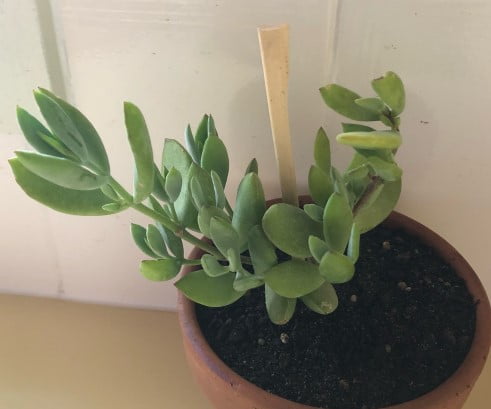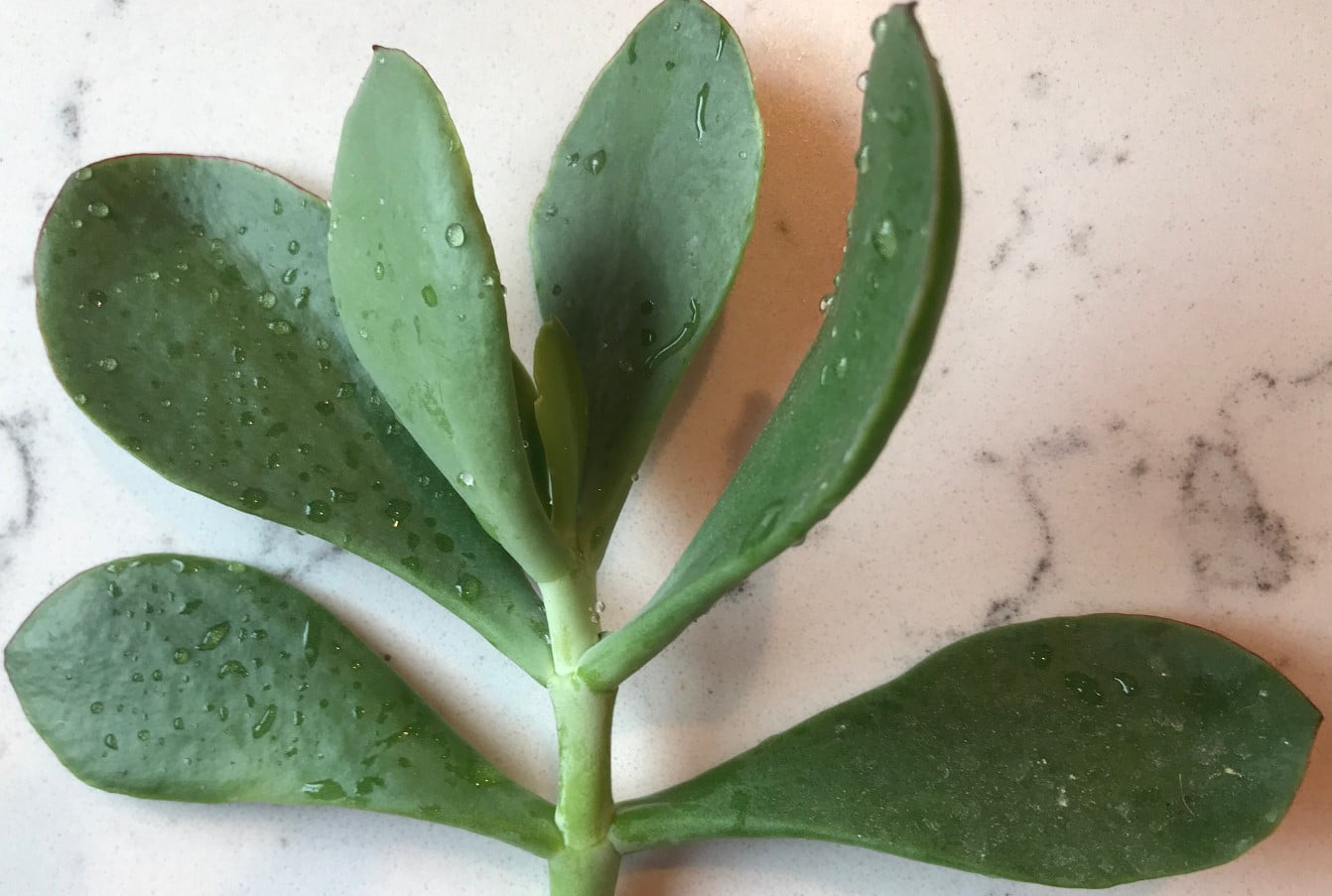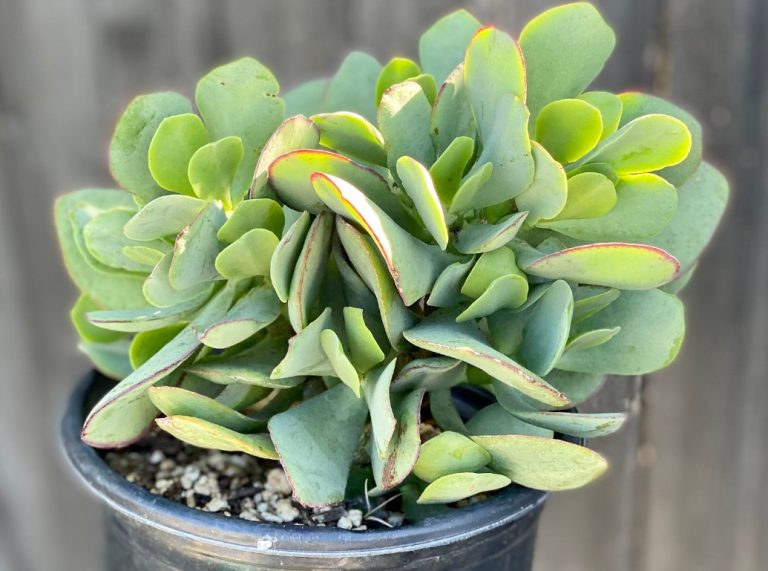The serene beauty of succulents in a garden or indoor space is undeniably alluring. Among these, the Cotyledon Mint Truffles stands out with its charming aesthetics and easy-going nature. This succulent is not only a delight to the eyes but also a prime choice for both seasoned and novice gardeners. This comprehensive guide aims to unravel the essentials of Cotyledon Mint Truffles care and propagation, paving the way for a joyful gardening experience. Whether you are just starting out with succulents or looking to expand your green space, understanding the specific needs of the Cotyledon Mint Truffles will equip you with the know-how to nurture and propagate these botanical gems successfully.
Understanding Cotyledon Mint Truffles
The journey to proficiently caring for and propagating Cotyledon Mint Truffles begins with an in-depth understanding of its origins and characteristics.
Origin and Natural Habitat
Hailing from the arid terrains of South Africa, Cotyledon Mint Truffles have evolved to thrive in drought-prone environments. They belong to the Cotyledon genus, a part of the Crassulaceae family, renowned for its drought-tolerant species. The native habitat of Cotyledon Mint Truffles provides clues to its care requirements; a love for bright sunlight, well-draining soil, and infrequent watering.

Physical Characteristics and Growth Habit
Cotyledon Mint Truffles are known for their pudgy, oval leaves that sport a stunning mint-green hue, often accompanied by a delicate red edging when exposed to bright sunlight. They usually grow in a compact, rounded mound, reaching a modest height of about 6 to 8 inches with a similar spread. The contrast of their foliage against a backdrop of soil or other succulents is visually soothing, making them a cherished addition to any plant collection.
During the late spring to early summer, Cotyledon Mint Truffles might surprise you with a spray of bell-shaped flowers, adding a whimsical touch to its already endearing appearance.
Common Uses and Benefits
Besides their ornamental value, Cotyledon Mint Truffles are often appreciated for their low-maintenance nature. They are excellent candidates for xeriscaping – a landscaping method that minimizes water use. Furthermore, their compact growth habit makes them suitable for container gardening, rock gardens, or as ground cover in dry, sunny areas.
In a broader spectrum, succulents like Cotyledon Mint Truffles contribute to biodiversity, and their water-wise nature is a step towards sustainable gardening practices. They are also believed to have air-purifying qualities, making them a wholesome choice for indoor gardening enthusiasts.
Their ease of care, coupled with a high propagation success rate, makes Cotyledon Mint Truffles a rewarding venture for anyone keen on delving into the world of succulents.
Basic Requirements for Cotyledon Mint Truffles Care

To ensure your Cotyledon Mint Truffles thrive and continue to grace your space with their beauty, it’s imperative to mimic their natural habitat conditions as closely as possible. Here’s a breakdown of the fundamental care requirements for these succulents:
Light Requirements
Cotyledon Mint Truffles are sun-loving plants that flourish under bright, indirect light. They can tolerate direct sunlight for a few hours, especially during the morning. However, it’s advisable to provide some shade during the scorching afternoon sun to prevent leaf scorch.
Indoor Care Tip: Place them near south or west-facing windows where they can receive ample sunlight. If natural light is insufficient, consider using a grow light to maintain their growth and coloration.
Temperature and Humidity Preferences
Being native to arid regions, Cotyledon Mint Truffles are adapted to warm temperatures and low humidity. They do well in temperatures ranging from 50°F to 85°F (10°C to 30°C). It’s crucial to protect them from frost and extremely cold temperatures as they are not frost-tolerant.
Humidity: Low to moderate humidity is ideal. High humidity levels can lead to fungal diseases like root rot, especially if the soil remains wet for extended periods.
Watering Needs
Over-watering is a common pitfall in Cotyledon Mint Truffles care. These succulents have a preference for the “soak and dry” watering method, where the soil is allowed to dry out completely between waterings. It’s always better to err on the side of under-watering than over-watering.
Watering Tip: Use a well-draining succulent soil mix and a pot with drainage holes to prevent water logging.
Soil Type and pH Requirements
A well-draining soil mix is non-negotiable for Cotyledon Mint Truffles. They thrive in sandy or gritty soil that doesn’t retain water for long. You can use a commercial succulent and cactus soil mix or make your own by mixing equal parts of potting soil, coarse sand, and perlite or pumice.
Soil pH: A slightly acidic to neutral pH range of 6.0 to 7.5 is ideal for Cotyledon Mint Truffles.
The table below summarizes the basic care requirements of Cotyledon Mint Truffles:
| Aspect | Requirement |
|---|---|
| Light | Bright, indirect light; some direct morning sunlight |
| Temperature | 50°F to 85°F (10°C to 30°C) |
| Humidity | Low to moderate |
| Watering | Soak and dry method |
| Soil Type | Well-draining, sandy or gritty soil |
| Soil pH | 6.0 to 7.5 |
Feeding and Fertilizing Your Cotyledon Mint Truffles
Providing the right nutrients is a cornerstone of ensuring a vibrant and healthy growth for your Cotyledon Mint Truffles. Let’s delve into the what, when, and how of fertilizing these succulent beauties.
Types of Fertilizer Suitable for Cotyledon Mint Truffles
Cotyledon Mint Truffles, like most succulents, do not demand a heavy feeding schedule. A balanced, water-soluble fertilizer with equal amounts of Nitrogen, Phosphorous, and Potassium (often referred to as N-P-K) is ideal. A typical succulent fertilizer formulation like a 20-20-20 would work well.
Organic Alternatives: If you prefer organic gardening practices, compost tea or worm castings are excellent organic fertilizer options. They provide a slow-release of nutrients, reducing the risk of over-fertilization.
Frequency of Fertilization
Fertilizing once at the beginning of the growing season (spring) and perhaps once more mid-summer is generally sufficient for Cotyledon Mint Truffles. Over-fertilization can lead to soft, leggy growth, making the plant more susceptible to pests and diseases.
Signs of Over-fertilization and How to Rectify
Over-fertilization can manifest in several ways including yellowing or browning of leaf tips, slowed growth, or a white, crusty buildup on the soil surface. If you suspect over-fertilization:
- Cease Fertilizing: Stop any further fertilization to prevent exacerbating the issue.
- Flush the Soil: Thoroughly water the soil to flush out excess fertilizer salts. Ensure the water drains out completely to avoid waterlogging.
- Repotting: If the problem persists, consider repotting your Cotyledon Mint Truffles into fresh, well-draining soil.
Fertilizing is a part of the care routine where less is often more. Being observant and adjusting your fertilization routine based on your Cotyledon Mint Truffles’ response will pave the way for a flourishing growth.
Common Problems and Solutions in Cotyledon Mint Truffles Care
Even with meticulous care, your Cotyledon Mint Truffles might face a few hurdles along the way. Here, we unravel common problems and solutions to keep your succulent thriving.
Pest Infestations
Pests like mealybugs and spider mites are common adversaries. They suck sap from the leaves, leading to discolored or deformed foliage.
- Prevention: Maintain good air circulation, avoid over-watering, and inspect your plants regularly.
- Control: Remove pests manually or use a soft cloth dipped in alcohol to wipe them off. In severe cases, consider using insecticidal soap or neem oil, ensuring to follow the product’s instructions.
Diseases
Root Rot: Often a consequence of over-watering and poor drainage, root rot is a fungal disease that can be fatal if not addressed.
- Prevention: Ensure well-draining soil and avoid over-watering.
- Control: If noticed early, remove the plant from its pot, cut away rotted roots, and repot in fresh, well-draining soil.
Powdery Mildew: Appears as white, powdery spots on leaves and stems. It’s often a result of high humidity and poor air circulation.
- Prevention: Keep a good airflow around your plants and water them at the soil level rather than from above.
- Control: Neem oil or other antifungal treatments can be effective.
Environmental Stress
Environmental stress can be caused by sudden changes in temperature, light, or transplant shock.
- Adaptation: Gradually acclimate your Cotyledon Mint Truffles to new conditions to minimize stress.
- Recovery: Provide optimal care conditions and be patient as your plant recuperates.
Understanding these common problems and their solutions equips you with the knowledge to promptly address any issue that arises, ensuring the longevity and vitality of your Cotyledon Mint Truffles.
Pruning and Grooming Your Cotyledon Mint Truffles
An integral part of nurturing your Cotyledon Mint Truffles entails periodic pruning and grooming. This not only maintains a neat appearance but also encourages healthy growth and flowering.
When and Why to Prune
Timing: The best time to prune is during the active growing season, typically in spring or early summer. This allows the plant to heal quickly and sprout new growth.
Reasons for Pruning:
- To remove dead or dying foliage which can attract pests or diseases.
- To maintain a compact, desirable shape.
- To encourage bushier growth and potentially more flowers.
Tools Required for Pruning
- Pruning Shears: Ensure they are sharp and sterile to make clean cuts and prevent disease transmission.
- Gloves: Wear gloves to protect your hands, especially if the plant has sharp edges or irritant sap.
Step by Step Guide on How to Prune Cotyledon Mint Truffles
- Inspect: Begin by inspecting your Cotyledon Mint Truffles for any dead, diseased, or overly leggy growth.
- Sterilize: Sterilize your pruning shears with rubbing alcohol to prevent the spread of diseases.
- Prune: Make clean cuts close to the main stem or the base of the leaf, without injuring the main plant.
- Shape: If desired, trim to shape the plant but avoid excessive pruning as it could stress the plant.
- Dispose: Dispose of the cut material, especially if it was diseased, to prevent any future problems.
- Clean: Wipe down your tools and wash your hands thoroughly after pruning.
Propagating Your Cotyledon Mint Truffles
Propagation is a rewarding aspect of gardening, and with Cotyledon Mint Truffles, the process is straightforward and enjoyable. Through propagation, you can multiply your collection and even share these delightful succulents with friends and family.
Various Methods of Propagation
Cotyledon Mint Truffles can be propagated through several methods, each with its unique process and success rate:
- Leaf Cuttings: This is the most common method where a healthy leaf is used to grow a new plant.
- Offsets: Occasionally, Cotyledon Mint Truffles produce offsets or pups that can be separated and planted individually.
Step by Step Guide on Propagating from Leaf Cuttings
- Select Healthy Leaves: Choose healthy, firm leaves from your Cotyledon Mint Truffles. Gently twist the leaf off the stem ensuring it comes away cleanly.
- Let it Callus: Allow the cut end of the leaf to dry and form a callus over a few days to prevent rot when planted.
- Planting: Once callused, place the leaf on well-draining soil. Do not bury it; just let it sit on top of the soil.
- Watering: Mist the soil around the leaf lightly, maintaining a slight moisture level but avoid waterlogging.
- Rooting: In a few weeks, roots and possibly new growth will emerge. Once substantial roots have formed, you can plant the new growth in its own pot.
Tips for Successful Propagation
- Patience is Key: Propagation is a test of patience. It may take several weeks before you see any roots or new growth.
- Light: Provide bright, indirect light during the rooting stage to encourage healthy growth.
- Watering: Over-watering is a common pitfall during propagation. Ensure the soil is only slightly moist to prevent rot.
Rooting and Transplanting
Once your propagated Cotyledon Mint Truffles have established roots, or when your existing plants have outgrown their current homes, it’s time to transplant them. This phase is crucial for their continued growth and health.
When and How to Transplant Cotyledon Mint Truffles
Timing: Transplanting is best done during the active growing season, typically in spring or early summer when the plants can recover quickly.
Procedure:
- Preparation: Begin by selecting a new pot that is slightly larger than the current one, ensuring it has good drainage. Prepare a well-draining soil mix as discussed in the basic care requirements section.
- Removal: Gently remove the Cotyledon Mint Truffles from its current pot, shaking off excess soil from the roots and inspecting for any signs of pests or diseases.
- Planting: Place the plant in the new pot, filling in with soil around the roots and gently tamping down to eliminate air pockets.
- Watering: Water the soil thoroughly and let it drain.
Soil Preparation for Transplanting
- Soil Mix: Use a well-draining soil mix, either a commercial succulent and cactus mix or a homemade mix of equal parts potting soil, coarse sand, and perlite or pumice.
- Soil pH: Aim for a slightly acidic to neutral pH range of 6.0 to 7.5.
Care after Transplanting
- Watering: Allow the soil to dry out between waterings. Over-watering, especially right after transplanting, can lead to root rot.
- Light: Provide bright, indirect light, gradually acclimating your Cotyledon Mint Truffles to any new light conditions to prevent shock.
- Monitoring: Keep an eye on your plant, watching for signs of stress or discomfort, and adjust your care routine accordingly.
Winter Care for Cotyledon Mint Truffles
As the chilly season approaches, preparing your Cotyledon Mint Truffles for winter is vital to ensure their survival and continued thriving. Here’s a roadmap to winter care, tailored to keep your plant hearty through the cold months.
Preparing Cotyledon Mint Truffles for Winter
- Inspection: Before the onset of cold weather, inspect your plants for pests or diseases and address any issues. Healthy plants are better equipped to withstand winter stress.
- Reduce Watering: As the growth slows down in winter, the water requirement of cotyledon mint reduces. Extend the interval between watering and ensure the soil dries out completely.
- Last Fertilization: Apply a last dose of fertilizer in late summer or early fall to provide the nutrients needed for winter.
Overwintering Indoors
If you reside in an area where temperatures drop below freezing, overwintering indoors is advisable.
- Indoor Spot: Choose a bright spot indoors near a south or west-facing window.
- Temperature: Maintain indoor temperatures above 50°F (10°C) to ensure your plant stays comfortable.
- Humidity: Indoor heating can dry out the air; consider using a humidity tray or a room humidifier if the humidity drops significantly.
Light and Watering Adjustments
- Light: The shorter, darker days of winter may necessitate supplemental lighting. A grow light can help in maintaining healthy growth.
- Watering: Water sparingly, only when the soil is dry to touch. Over-watering during winter can be detrimental.
Winter care is about adjusting your routine to match the slowed pace of your Cotyledon Mint Truffles. With reduced watering, adequate lighting, and a cozy spot indoors if necessary, your succulent can weather the winter, ready to burst forth in growth with the return of warmer days.
Frequently Asked Questions
Caring for Cotyledon Mint Truffles can spark a series of questions, especially if you’re new to succulent gardening. Here’s a compilation of common queries along with succinct answers to guide you on your gardening voyage.
Can Cotyledon Mint Truffles be Grown Indoors?
Absolutely! Cotyledon Mint Truffles adapt well to indoor conditions provided they receive ample light. Place them near a south or west-facing window or under a grow light to ensure they receive the light they crave.
Are Cotyledon Mint Truffles Pet-Friendly?
While Cotyledon Mint Truffles are delightful to humans, they can be harmful to pets if ingested. It’s advisable to keep them out of reach of pets to prevent any mishaps.
How Fast do Cotyledon Mint Truffles Grow?
The growth rate of Cotyledon Mint Truffles is moderate. With optimal care conditions – ample light, well-draining soil, and the right watering regimen, they can grow steadily through the growing season.
How Often Should I Water Cotyledon Mint Truffles?
Watering frequency is contingent on various factors including the size of the pot, the temperature, and humidity levels. A general rule is to allow the soil to dry out completely between waterings. Over-watering is a common pitfall, so it’s better to err on the side of under-watering.
Do Cotyledon Mint Truffles Flower?
Yes, Cotyledon Mint Truffles can produce charming bell-shaped flowers, usually in late spring to early summer. Ensuring a bright light source and proper watering routine can encourage flowering.
These FAQs serve as a quick reference, addressing common concerns while caring for your Cotyledon Mint Truffles. The joy of gardening often lies in the learning curve, each question leading you to a deeper understanding and a closer connection with your green companions.
Conclusion
Embarking on the journey of Cotyledon Mint Truffles care and propagation unveils a rewarding and enriching experience. The simplicity yet profound beauty of these succulents adds a tranquil charm to your green space. The guidelines provided in this comprehensive guide aim to equip you with the knowledge required to nurture and propagate Cotyledon Mint Truffles successfully. From understanding their basic needs, addressing common problems, to mastering the art of propagation and transplanting, each step brings you closer to becoming adept at caring for these delightful plants.
As you delve deeper into the nuances of Cotyledon Mint Truffles care, each day presents a learning opportunity, refining your gardening skills. The joy of watching a leaf cutting evolve into a full-grown plant or the thrill of seeing the first bloom are unmatched and deeply gratifying.
Let the serene beauty of Cotyledon Mint Truffles inspire you, the knowledge acquired guide you, and the joy of gardening fulfill you. With patience, observation, and a touch of love, the world of Cotyledon Mint Truffles is bound to be a rewarding adventure.
